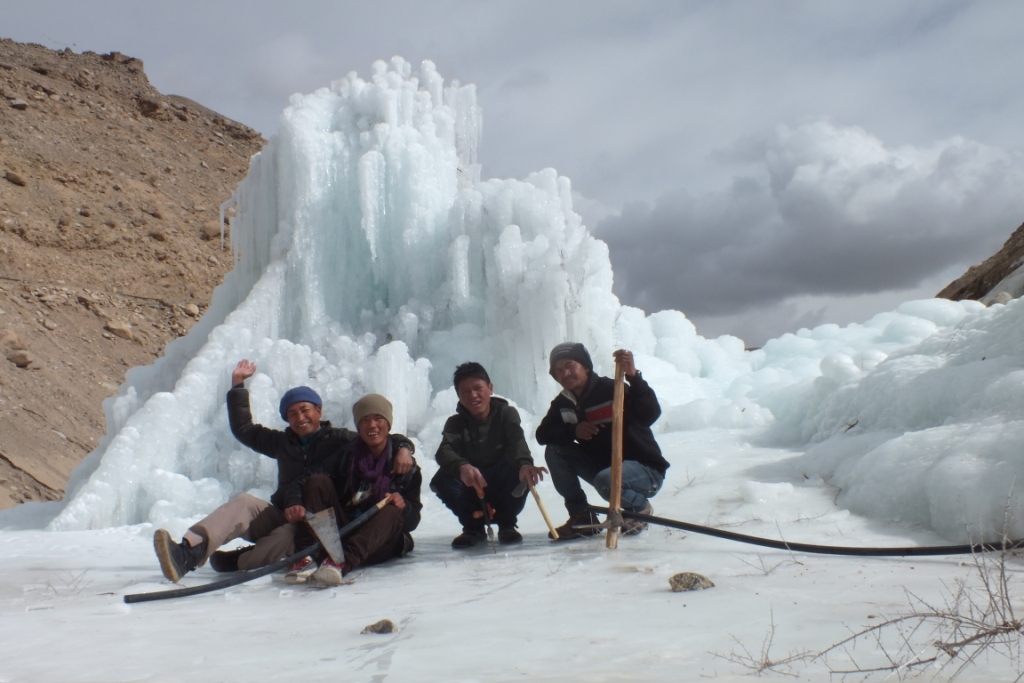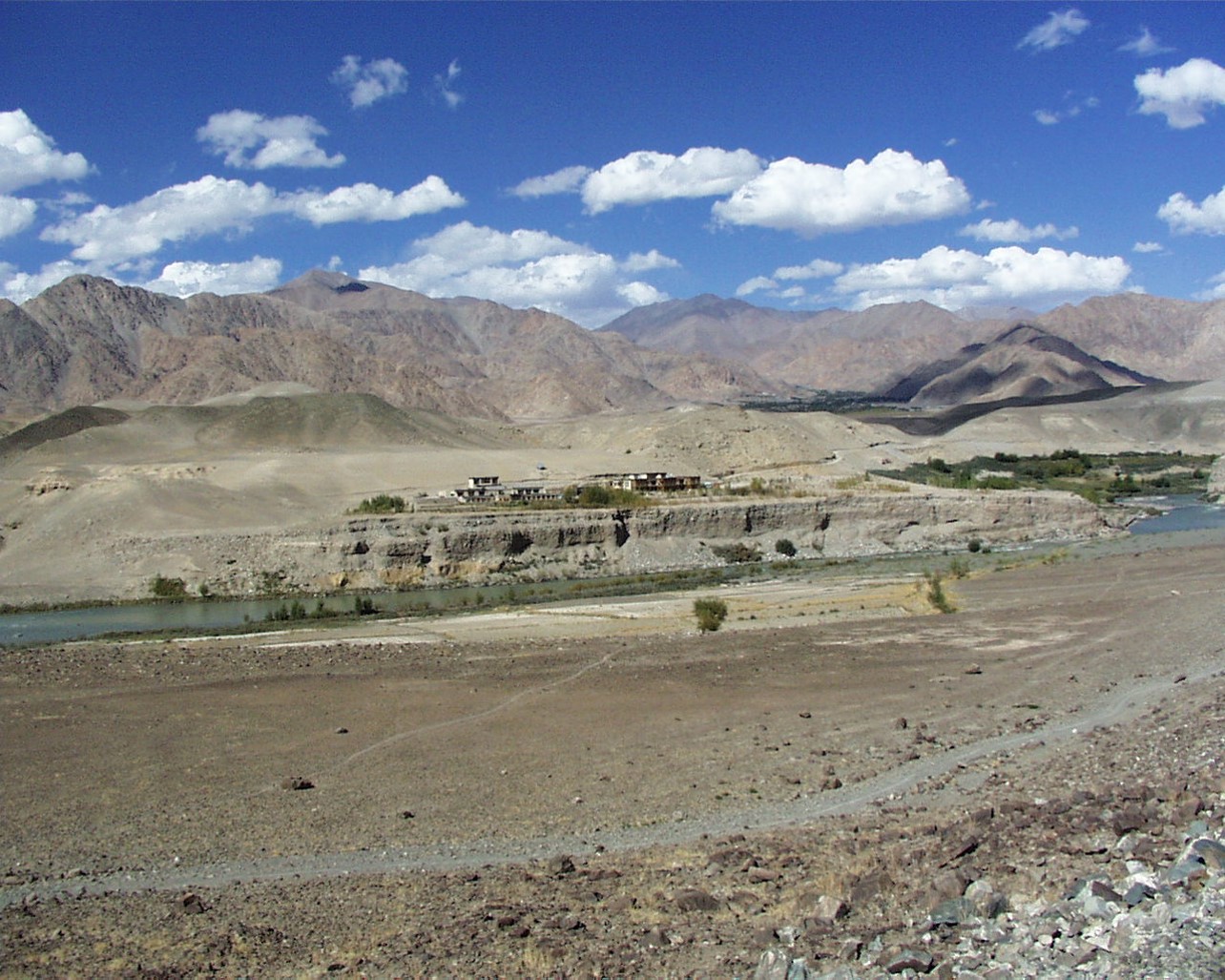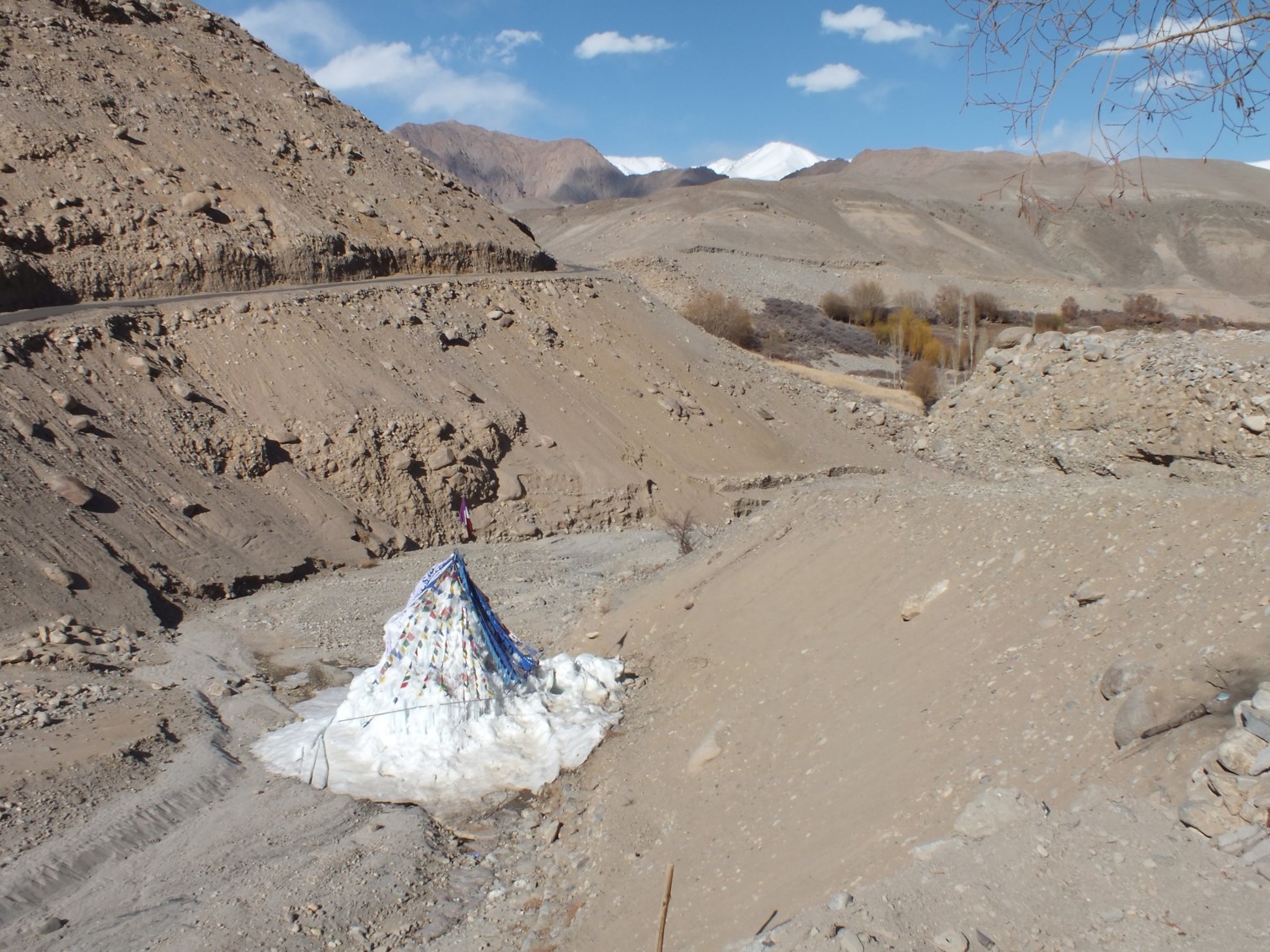The Engineer Who Is Creating Ice Stupas To Solve The Water Problems Of People In Ladakh
Inspired by Chewang Norphel's work of creating artificial glaciers, when Sonam Wangchuk saw people struggling to meet their basic water requirements in Ladakh, he came up with a solution of creating vertical ice stupas to store water for a longer time. The average stupa is 35 meters to 40 meters high and can store upto 16,000 cubic litres of water which is enough to irrigate 10 hectares of land. Read how Wangchuk plans to create 80-90 such stupas to solve all of Ladakh's water troubles.

Sonam Wangchuk had been inspired by Chewang Norphel’s work of creating artificial glaciers. So when he saw people struggling to meet their basic water requirements in Ladakh, he came up with a solution of creating vertical ice stupas to store water for a longer time. The average stupa is 35 meters to 40 meters high and can store upto 16,000 cubic litres of water which is enough to irrigate 10 hectares of land. Read how Wangchuk plans to create 80-90 such stupas to solve all of Ladakh’s water troubles.
The beautiful mountains of Ladakh are a breathtaking sight and a memorable experience for the tourists. But ask those who are permanently settled here and struggling in these dry and cold mountains, and you will learn of the day-to-day difficulties they have to deal with.

Make an impact
Donate now so that Sonam Wangchuk can build 80-90 Ice Stupas and achieve water security for villages in Ladakh.
The infertile land and lack of regular sources of water makes living even tougher for these communities. Water from the glaciers, which every farmer needs, comes as the only solution, but these glaciers are frozen for the large part of the year.
Many changemakers have tried to solve the issue by creating artificial glaciers. Though the solution looks feasible and has helped the people of Ladakh to a great extent, there were some challenges which these solutions faced. Sonam Wangchuk, a mechanical engineer from Ladakh, drew inspiration from Chewang Norphel’s work of creating artificial glaciers and thought of helping to make the idea more successful.
“I saw the problems these people were facing. The artificial glaciers were built at a very high altitude and villagers or workers were reluctant to climb so high. I wondered why we couldn’t construct glaciers right there in the village. The temperature is low enough to keep the water frozen – we just needed a smart way to make these glaciers,” says Wangchuk.

To address the issue, Wangchuk along with the students of SECMOL Alternative School which he himself set up, started an interesting project called Ice Stupa. “Our aim was to find a solution to the water crisis facing Ladakhi farmers in the critical planting months of April and May, before the natural glacial melt waters start flowing,” he says. They named the project ‘Ice Stupa’ because the shape of the glacier resembled the traditional stupas of Ladakh.
Within two months, Wangchuk’s team managed to build a two-storey ice stupa that could store around 1,50,000 litres of water. This prototype was put to test and was built at the warmest possible location and lowest possible altitude on the banks of the Indus river at a height of 10,400 feet. This was done to check if it works there, because if it did work there then it could work anywhere.

How does the ice stupa work?
“I observed that for the spring sun and winds to melt the ice, they needed large surface areas. So if we reduced the area exposed to the sun and wind, then the ice could be stored in the village itself, thus eliminating the need for villagers to climb the mountains,” Wangchuk says.
Hence, he came up with an idea of constructing cones of ice vertically towards the sun, as then there will be very less surface area exposed to the sun and it will melt slower.
“For example, one ice stupa of 40 m height and 20 m radius would store roughly sixteen million litres of water. If the same amount of water was frozen as a flat ice field 2 m thick, the area exposed to sun would be roughly five times more. Therefore, the sun and the warm spring winds would melt it roughly 5 times faster,” Wangchuk explains.

The other amazing science concept is used in the fact that there is no electricity used to pump the water to a higher level. To make the water reach the full height of the vertical stupa, a pipe is joined from a higher up-stream and adjusted manually according to the size of the stupa. As water always maintains its level, it reaches the tip of the pipe. As the fountain flows down from the tip, it converts into ice due to the low air temperature outside, freezing in a conical form.
Also, the water that melts from the tip of the stupa will flow down; and as it comes in contact with the cool breeze, it will freeze and will eventually increase the size of the stupa.

“The water has to be cool enough that it freezes as it gets in touch with the outside air, and at the same time, it should be warm enough that it does not freeze in the pipe itself,” says Wangchuk.
The average stupa is 35 meters to 40 meters high and can store upto 16,000 cubic litres of water which is enough to irrigate 10 hectares of land. It costs approximately Rs.1.5 per cubic meter.
Watch this video to understand the concept better –
The dream
After the successful prototype, Wangchuk and his team of five members are taking their idea to a bigger scale and planning to construct around 80 to 90 stupas at the top of the vast deserts of Phyang village.
These stupas will be 100 times bigger than the prototype and will easily meet the water needs of people till the end of June.
The budget of constructing these stupas is $100,000 (Rs. 61,34,800) and Wangchuk is aiming to raise around $119,500 (Rs. 73,31,086) to cover the extra costs of platform fees, bank/credit card charges, rewards, perks and shipment costs for supporters, etc.
Click here and lend your support for the creation of 80-90 Ice Stupas and give Ladakh water security.
Like this story? Or have something to share? Write to us: [email protected], or connect with us on Facebook and Twitter (@thebetterindia)
This story made me
- 97
- 121
- 89
- 167
Tell Us More
We bring stories straight from the heart of India, to inspire millions and create a wave of impact. Our positive movement is growing bigger everyday, and we would love for you to join it.
Please contribute whatever you can, every little penny helps our team in bringing you more stories that support dreams and spread hope.



















